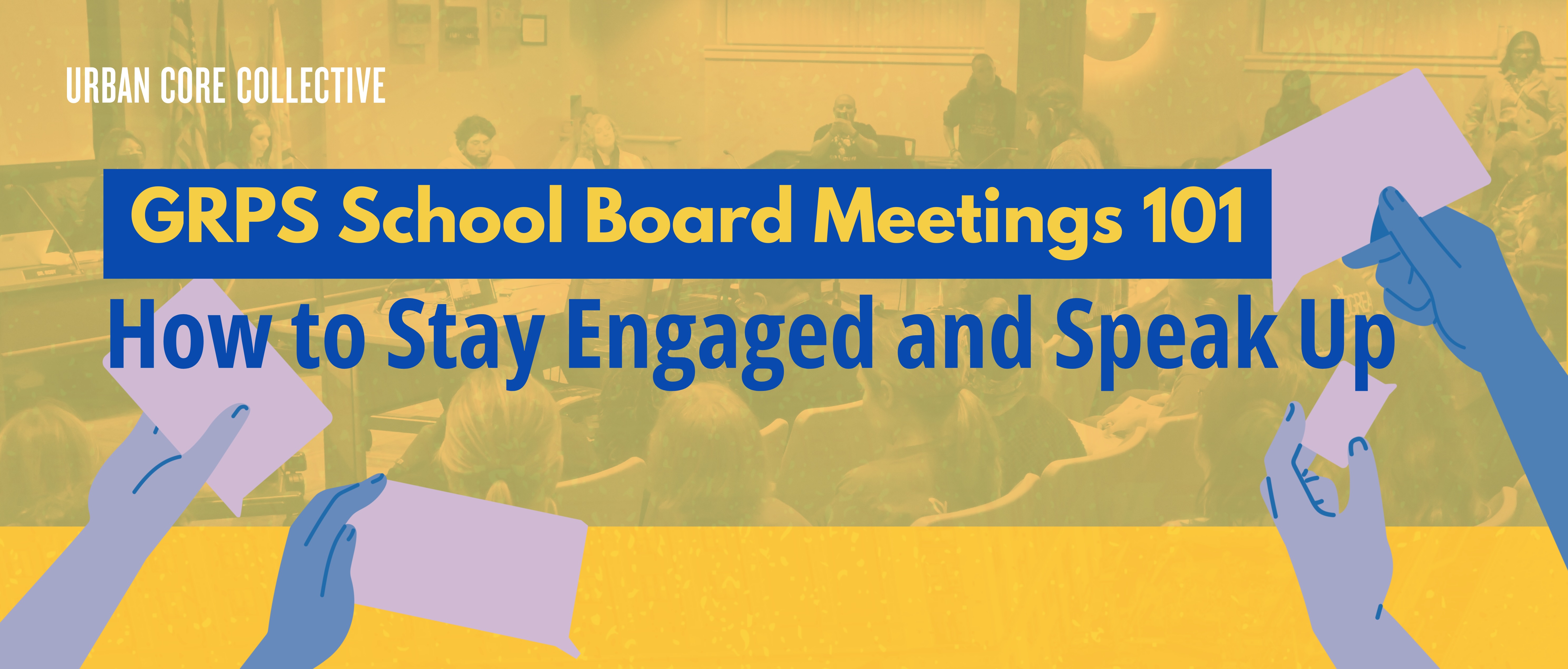On Wednesday July 15, we hosted a live conversation with Dr. Leadriane Roby, Grand Rapids Public Schools Superintendent, to talk about education during this critical time. Below is a summary of what we heard from the conversation, and some things we will be paying attention to in our ongoing advocacy efforts. The full conversation can be viewed here.
What we heard from Dr. Roby
Dr. Roby’s Vision and Plan for GRPS
Dr. Roby exhibited a knowledge and understanding of the discrepancy between the educational experience of Black and Brown students compared to their white peers. She shared a commitment to ensuring that all students have access to a “rigorous" educational experience, and to listen deeply to the experience of students of color.
She believes restorative practices are ways that we can substitute punitive practices of disciplining students for approaches that turn mistakes into “learning moments”.
And believes students of color need to be engaged to help the district rethink current educational structures.
In a "transformation to excellence," she is looking for ways to ensure excellence and accountability for students and family experiences with the district.
School Reopenings
Student, family and staff safety are paramount in decisions around school re-opening. Dr. Roby says that parent and community voice are vital in the decision-making process. A parent survey was disseminated before closing on July 13th; there is a secondary plan to reach out to families who did not respond to the survey. A staff survey is also being circulated.
Community Uprisings and Education
Black children in particular face different realities from their peers. The reality of anti-Blackness requires different kinds of conversations on how to stay safe and how to engage with society. Some of the dynamics that contribute to the experience of Black children are:
- Disproportionate number of Black children being disciplined in schools and being assigned to Special Education programs
- Two-tiered educational system where Black children do not receive the same kind of resources and opportunities as their white peers in other schools.
- Standardized testing produces discrepancies by reinforcing racial/cultural bias
- We have a lack of Educators of Color, due in part to the history of our education system.
- Educators often have chronically low expectations for Black students.
We need ways to help young people attend to the multiple traumas of both racial conflict and their experiences with COVID 19. Staff also need to be supported and resourced to help support students navigate these challenges.
Our children need to be taught about the history of racial injustice and how to speak out against unjust systems.
Things to pay attention to & questions to ask
Families are being asked to vote on preferred scenarios for school re-opening (virtual, hybrid, or in-person), but without clear plans attached to what those scenarios would look like.
What will hybrid and in-person school scenarios look like for the fall? Answering this is necessary in order for community members to give input and make educated decisions regarding going back to school.
Safety is the guiding value for school re-opening. How are we ensuring that ALL students are safe as school begins again in the Fall?
What is the experience that our most vulnerable students are having regarding school reopening? Are the health guidelines being followed? Are the models of schools reopening conducive to their education?
COVID19 has disproportionately affected communities of color, but schools do not have a targeted response to address this reality.
What are the ways that we’re ensuring the safety of Black and Latinx children in our schools given the reality that COVID19 disproportionately affects them and their families?
Dr. Roby plans to do a listening tour, there are specific segments of the population that need to be listened to based on their different experience within the school system: students of color, low-income students, special education students and English language learners, in particular.
How have these segments of the student body been listened to? What have you learned and how is that affecting decisions that are being made?
Students and community are a critical source for reimagining how our educational system may change.
What are the structures and processes being put in place to ensure that students and communities have opportunities to re-imagine and re-design their schools?
Part of the “transformation to excellence” plan includes receiving regular “experiential” feedback from students and families.
What are the “feedback loops” that are being put in place to gather this student and community feedback?




.png)

